Contents
- Introduction
- Preface
- Overview
- Relief Valve
-
LECTURE 1: Why We Are In The Dark About Money
- Wealth Objectives
- The Basics - Knowledge is Power
- The Wizard of Oz Story Allegory
- K12 Wealthy Decide
- Richest Two Percent Own Half World
- Cost of Inequality
- K Street Lobbys Write the Law
- Official Federal Reserve K12 Financial Literacy Curriculum by Grade Level
- What's Left Out of the Official U.S. Federal Reserve Curriculum
- EducRats
- Financial Literacy Quotes
- Lecture 1 Objectives and Discussion Questions
- LECTURE 2: The Con
- LECTURE 3: The Vatican-Central to the Origins of Money & Power
- LECTURE 4: London The Corporation Origins of Opium Drug Smuggling
- LECTURE 5: U.S. Pirates, Boston Brahmins Opium Drug Smugglers
- LECTURE 6: The Shady Origins Of The Federal Reserve
- LECTURE 7: How The Rich Protect Their Money
- LECTURE 8: How To Protect Your Money From The 1% Predators
- LECTURE 9: Final Thoughts
Old Money = Royalty, Opium Drug Smuggling Pirates, and Bankers
THE PLAGUE reached Europe from traveling across the Silk Road. An epidemic of plague that reached East Africa was probably spread by the voyages of the Chinese admiral - Zheng He - led a fleet of 300 ships to Africa in 1409.
 HOW THE MIDDLE CLASS GOT STARTED
HOW THE MIDDLE CLASS GOT STARTED
The masses died leaving no one left. Serfs were slaves to the landowners who now had no one to do the work. Suddenly serfs have the upper hand and can make demands.
1381 Supply and Demand. When the plague killed off so many "serfs" in 1381, it gave the ones who were left around the power to negotiate with the 1%, the Lord of the Manor. The peasants revolted against serfdom and bondage.
They used their collective power to demand a proper wage and the right to farm which created the Middle Class, the 99%.
REALLY OLD MONEY
THE GUELPHS - The Old Money family during the Middle Ages
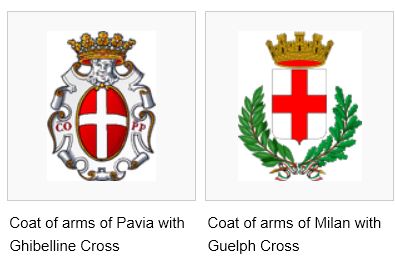
During the Middle Ages, European power centers coalesced into two camps, the Ghibellines, those who supported the Emperor’s Hohenstaufen family, (an Italian adaptation of Weinblingen, the name of the Hohenstaufen estate), and the Guelphs, from Welf, the German prince who competed with Frederick for control of the Holy Roman Empire.
The Pope then allied himself with the Guelphs against the Ghibellines resulting in their victory. All of modern history stems directly from the struggle between these two powers.
The Guelphs and the Ghibellines were rival parties in medieval Germany and Italy which supported the papal party and the Holy Roman emperors respectively. However, in Italy the divisions became more a function of rivalries between cities and even local families. Eventually the Guelphs split into two rival factions known as Whites and Blacks.
The struggle for power between the Papacy and the Holy Roman Empire had arisen with the Investiture Conflict which began in 1075 and ended with the Concordat of Worms in 1122, but the division between Guelphs and Ghibellines in Italy persisted to the 15th century.
The division between Guelphs and Ghibellines was especially important in Florence.
House of Welf vs. the House of Hohenstaufen: Before the return of the popes from Avignon, "Guelph" and "Ghibelline" had lost all real significance. Men called themselves Guelph or Ghibelline, and even fought furiously under those names, simply because their forbears had adhered to one or other of the factions. In a city which had been officially Guelph in the past, any minority opposed to the government of the day, or obnoxious to the party in power, would be branded as "Ghibelline". Thus, in 1364, we find it enacted by the Republic of Florence that any one who appeals to the pope or his legate or the cardinals shall be declared a Ghibelline. "There are no more wicked nor more mad folk under the vault of heaven than the Guelphs and Ghibellines", says St. Bernardino of Siena in 1427.
MODERN DAY GUELPH
MODERN DAY GUELPH The Duchess of Alba
recognized as the world's most titled noble aristocrat head of the 539-year-old House of Alba, her privileges include not having to kneel before the pope and the right to ride on horseback into Seville cathedral. In 1364, we find it enacted by the Republic of Florence that any one who appeals to the pope or his legate or the cardinals shall be declared a Ghibelline.
The Sutherland family, first cousins to the Mathesons, was the most powerful of these cotton families.
Sutherland Insurance sutherlandinsurance.com As a 5th generation Guelph family business, our wealth of insurance knowledge and experience allows us to provide our customers with a level of professional service which is second to none. Introducing our Sutherland Insurance mobile app! sutherlandinsurance.com
OLD MONEY
PATRILINEAL
DESCENT
Patrilineal descent, goes from father to son and is the principle behind membership in royal houses, which can be traced back through the generations. This means that the historically accurate royal house of monarchs of the House of Hanover was the House of Lucca (or Este, or Welf).
Peerage titles cannot be withdrawn except by Act of Parliament. So in 1917, the Parliament passed the Titles Deprivation Act authorising the deprivation of peerage titles, as well as princely dignities which applies to those "who have, during the present war, borne arms against His Majesty or His Allies, or who have adhered to His Majesty's enemies".
ESTE OR WELF
THE ELDER HOUSE OF WELF
http://en.wikipedia.org/wiki/Elder_House_of_Welf
Welf was a dynasty of European rulers in the 9th through 11th centuries to 1055. It consisted of two groups, a Burgundian group and a Swabian group. It is disputed whether the two groups formed one dynasty or whether they shared the same name by coincidence only. The older of the two groups was the Burgundian group. Its oldest known member was Welf, the first Count of Altdorf. He was mentioned in 819 as father of Empress Judith. The oldest known member of the Swabian group was Welf I, a count in Swabia who was first mentioned in 842. According to legend, Welf I was a son of Conrad, son of Welf, the ancestor of the Burgundian group. The Elder House of Welf became extinct when Welf, Duke of Carinthia, died childless in 1055. The property of the House of Welf was inherited by the elder branch of the House of Este that came to be known as the younger House of Welf, or House of Welf-Este.
HOUSE OF WELF (Welf family tree 12th century)
The House of Welf (historically rendered in English as Guelf or Guelph) was a European dynasty that has included many German and British monarchs from the 11th to 20th century.
The House of Welf is the older branch of the House of Este, a dynasty whose earliest known members lived in Lombardy in the 9th century. For this reason, it is sometimes also called Welf-Este. The first member of this branch was Welf IV; he inherited the property of the Elder House of Welf when his maternal uncle Welf, Duke of Carinthia, died in 1055. In 1070, Welf IV became duke of Bavaria.
Welf V married Countess Matilda of Tuscany who died childless and left him her possessions, including Tuscany, Ferrara, Modena, Mantua, and Reggio, which played a role in the Investiture controversy. Since the Welf dynasty sided with the Pope in this controversy, partisans of the Pope came to be known in Italy as "Guelphs" (an Italian form of Welf)
Welf Henry was a descendant of Victoria of the United Kingdom and Albert, Prince Consort through their eldest daughter Victoria, Princess Royal, the wife of Frederick III, German Emperor. His sister, Princess Friederike of Hanover married Paul I, King of the Hellenes.
Succession Laws in the House of Welf. http://www.heraldica.org/topics/royalty/HGBraunschweig.htm

The current head of the House of Hanover is Ernst August V, Prince of Hanover. 1472 founded the Monte dei Paschi, a bank that is still active today and is the oldest surviving bank in the world.
WELF = GUELF
OR GUELPH
GERMAN / BRITISH MONARCHS
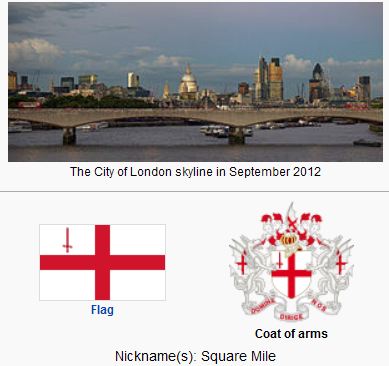
is a European dynasty that has included many German and British monarchs from the 11th to 20th century.
1350 Renaissance period, with its emphasis on freedom of the human spirit, replaces oligarchic control structures in Europe. It produces individualism that is immediately expressed as republican nationalism, dedicated to ending all hereditary control and dictatorship over the lives of people.
The Renaissance Period becomes de-structured again by the old families in Europe. England eventually becomes the source of the movement to destroy nationalism (initially through conquest and establishment of the British Empire) and individualism, expressed in the Communist movement.Eventually, two world wars would be planned to restore rule by the oligarchy.
TIP: Their plan is to restore rule by the oligarchy 1% vs. 99%
Facts - Phelps School is a High School in Malvern, Pennsylvania. In 1948, it received its exempt organization status from the IRS and now brings in $4M in annual income, primarily through program revenue. Phelps Equestrian Center is a Pennsylvania Fictitious Name filed on December 19, 1977 .
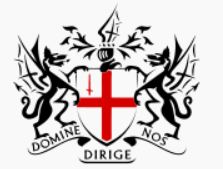
It is the coat of arms for the City of London Corporation
THE WHITE GUELPHS FLAG - RED CROSS ON WHITE
Just like the City of London Corporation is today.
The Whites were opposed to Papal influence, specifically the influence of Pope Boniface VIII.
In 1905, 35 years after its formation, the society was reconstituted as the British Red Cross Society, and was granted its first Royal Charter in 1908 by HM King Edward VII and Queen Alexandra, who became its president. American Red Cross questioned about how it spends donated dollars - the charity spends as much as 26 cents on fundraising expenses alone, just 14% of the charity’s total spending went to disaster relief. About two-thirds of its spending, at $2.2bn, was spent on its blood business. Up to 40% of American Red Cross emergency vehicles were used as backdrops for news conferences. The charity has spent on average 17¢ per dollar on its fundraising efforts. These expenses, while higher than what was previously presented to public, are still below the ceilings set by charity watchdog organizations. Nonprofit experts say that in combining the blood business spending with disaster relief spending, the Red Cross is painting a confusing picture of its operations for donors. "It probably has the effect of making the Red Cross look better than it actually is," says Jack Siegel, a lawyer who runs the consulting firm Charity Governance. If the Red Cross split its blood business from the rest of the charity, "their ratios would look worse. So they don't want to do that," says Borochoff of CharityWatch.
GUELPHS
SUPPORTED
THE POPE
The Guelphs supported the POPE
Guelphs (church party) tended to come from wealthy mercantile families.
The Guelphs were, upon the whole, fighting the battle of mankind.
Dante was on their side, -- a great fact in itself. Closely allied with the pope, then the chief civilizing power of Europe, the sole protector of the people against the tyranny of their lords, the Guelphs were greatly instrumental in limiting the power of the emperors, and preventing all the fairest countries of Europe from lapsing under the dominion of a single dynasty. It was from these warlike Guelphs of the middle ages that the present royal house of England descended.
[CHURCH PARTY]
BREAKS INTO
BLACK GUELPHS
WHITE GUELPHS
By 1300 Florence was divided into the Black Guelphs and the White Guelphs.
The Black Guelphs continued to support the Papacy
The Guelphs, with their impregnable castles among the mountains, drawing tribute from the fertile provinces of northern Italy and southern Germany, appear to have been for a time as wealthy and powerful a family as any in Europe of less than imperial or royal rank. It became too powerful. The Guelphs quarrelled among themselves. They divided into two factions, one of which retained the name of Guelph, and the other acquired that of Ghibeline, and each of them was powerful enough to maintain an army in the field. Both the Guelphs and the Ghibelines committed enormous outrages.
It was from these warlike Guelphs [thugs] of the Middle Ages that the present Royal House of England descended.

Just like the City of London Corporation is today.
The Whites were opposed to Papal influence, specifically the influence of Pope Boniface VIII.
During the 12th and 13th centuries, the White Guelph armies usually reversed the colors—red cross on white.
THE GHIBELLINES
SUPPORTED THE HOLY ROMAN EMPIRE
Ghibellines (imperial party) were predominantly those whose wealth was based on agricultural estates.
Ghibelline communes usually adopted the war banner of the Holy Roman Empire: white cross on a red field — as their own.
THE QUEEN OF ENGLAND IS SAID TO DESCEND FROM THE HOUSE OF WELF.
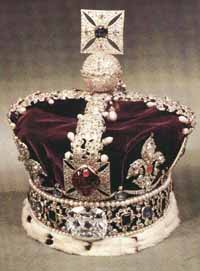 Victoria, Queen of England by James Parton, 1868
Victoria, Queen of England by James Parton, 1868
The family now upon the English throne is one of the oldest in Europe.
Among the mountains which divide Italy from Germany a powerful house named Welf held great possessions as long ago as the year 1100. Extending its conquests southward, it ruled some of the finest provinces of Italy, where the name was changed into Guelph, by which it has ever since been known. Gibbon, indeed, traces the family of Guelph up to Charlemagne; but we need not follow him so far in the labyrinth of heraldry. Let it suffice us to know that a powerful prince of the Guelphian race, six hundred years ago or more, acquired by marriage extensive possessions in the north of Germany. This prince is known in the history of Germany as Henry the Black.
http://womenshistory.about.com/library/etext/bl_eminent_victoria_b.htm
WELF =
BLACK NOBILITY
House of Welf - The Queen of England descends from the House of Welf.
Innumerable families are connected with the House of Guelphs, one of the original Black Nobility families of Venice, from which the House of Windsor and thus the present Queen of England, Elizabeth II, descends. The Guelphs are so intertwined with the German aristocracy through the House of Hanover that it would take several pages to mention all their connections. All (almost) European royal houses originate from the House of Hanover and thus from the House of Guelph — the Black Nobility.
The Hohenzollerns were the 15th dynasty to rule Germany and were related by marriage to all the others.
Chateau des Amerois II - Black Nobility
FAMILY FEUDS
The Guelphs from Welf Supported Weinblingen VS The Ghibellines who supported Emporer Hohenstaufen
During the Middle Ages, European power centers coalesced into two camps: the Ghibellines, those who supported the Emperor's Hohenstaufen family, (an Italian adaptation of Weinblingen, the name of the Hohenstaufen estate); and the Guelphs, from Welf, the German prince who competed with Frederick for control of the Holy Roman Empire.
1400 European power centers coalesce into two camps: the Ghibellines, who supported the Emporors Hohenstaufen family, and the Guelphs, from Welf, the German prince who competed with Frederick for control of the Holy Roman Empire.
The Pope then allied himself with the Guelphs against the Ghibellines resulting in their victory.
ALL OF MODERN HISTORY STEMS DIRECTLY FROM THE STRUGGLE BETWEEN THESE TWO POWERS.
The Guelphs, also called the Neri, or Black Guelphs, and Black Nobility, were the Normans (GERMANS) who conquered England in the 11th century; the Genoese who backed Robert Bruce in his conquest of Scotland, and who supported William of Orange in his seizure of the throne of England.
William’s victory resulted in the formation of the Bank of England and the East India Company, which have ruled the world since the 17th century.
Every subsequent coup d’etat, revolution and war has centered in the battle of the Guelphs to hold and enhance their power, which is now the World Order.
The power of the Guelphs grew through their control of banking and international trade. It was extended through the Italian centers to the north of Florence, in Lombardy, which became great financial centers. All Italian bankers, including the Genoese, the Venetians, and Milanese, were referred to as “Lombards”; Lombard, in German, means “deposit bank”; the Lombards were bankers to the entire Medieval world. Modern history begins with the transfer of their operations north to Hamburg, Amsterdam, and finally to London.
The great American fortunes originated with the Guelph slave trade to the colonies.
Many of the slave traders doubled in piracy.
Trinity Church, whose leading vestryman later was J.P. Morgan, was originally known as “the church of the pirates”.
Capt. William Kidd provided the material to build it in 1697, and a pew was reserved for him. He was arrested the next year, and hanged in chains at Newgate. In 1711, a slave market was set up on Wall Street near the church, and functioned there for many years.
The History of the Tontine and Wall Street
The History of the Tontine In the 17th century Italian Banker Lorenzo Tonti proposed an idea to the King of France as a means of raising substantial finance for the state. By the 18th century Tontines were also being used to raise private finance for hotels, bridges and other infrastructure projects on both sides of the Atlantic. Amongst the notable private projects funded was the construction of a coffee house at 82 Wall Street funded in 1793 by a tontine amongst stock dealers and ship underwriters.
The “Tontine Coffee House” became the primary venue in New York for the trading of shares & commodities. As with the development of the eponymous insurance market from the Lloyds teashop in London, the brokers & underwriters of the Tontine Coffee House went on to form the New York Stock Exchange.
By the mid 1850s however, the tontine issuing states had switched to “penny policies” (fledgling pension schemes) which were substantially less generous to the members and thus became far cheaper to the state. Seeing a gap in the market, Henry Hyde, the founder of Equitable Life in the US, introduced a pure tontine savings scheme to the US public in 1876. The launch was so successful that it was quickly copied by his main competitors including Mutual of New York & New York Life. Within 30 years, over $5.77bn of Tontines had been sold by the 4 largest firms equivalent to $160 BN in spending power today.
British East India Company / The Dutch East India Company
The Committee of 300 is a product of the British East India Company's Council of 300. These aristocrats decided at the death of Queen Victoria, the matriarch of the Venetian Black Guelphs that, in order to gain world-wide control, it would be necessary for its aristocratic members to "go into business" with the non-aristocratic but extremely powerful leaders of corporate business on a global scale, and so the doors to ultimate power were opened to what the Queen of England likes to refer to as "the commoners".
key events
Key Events leading to the Rise of the East India Company
1454 Pope induced to extend his blessing to the slave trade and his authority to “attack, subject and reduce to slavery the Saracens, Pagans and other “enemies of Christ.” Portugal becomes a prime user of slavery to promote its trade in sugar, to which people were becoming addicted.
1487 The Fuggers a German banking dynasty make their first loan to the Archduke of Habsburg, taking as security an interest in silver and copper mines in the Tirol. This was the beginning of an extensive family involvement in mining and precious metals.
1493 Columbus transports sugar cane to the New World on the advice of Queen Isabela. Members of his crew acquire syphilis in Haiti.
1495 Syphilis epidemic spreads to Europe from Naples, Italy, where the troops of Charles VIII were quartered.1496 Syphilis reaches England and Holland.
1500 Dutch establish a sugar refinery at Antwerp and ships sugar to Germany and England.
1510 King Ferdinand consents to recruitment of the first large contingent of African slaves in the growing Spanish sugar industry.
1515 Spanish monks offer loans in gold to anyone who would start a sugar mill.The Totenkopf is the German word for the deathman´s head
The Totenkopf is the German word for the deathman´s head [1] and an old symbol for the dead or the death. It consists usually of the skull and the mandible of the human skeleton. Beyond that it can include two crossed longbones (femurs). Use of the symbol as a military insignia began with the cavalry of the Prussian army under Frederick the Great.
Friedrich II.; 24 January 1712 – 17 August 1786) was a King in Prussia (1740–1772) and a King of Prussia (1772–1786) from the Hohenzollern dynasty.[1] In his role as a prince-elector of the Holy Roman Empire, he was Frederick IV (Friedrich IV.) of Brandenburg.1563 General outbreak of plague in Europe. Kills 20,000 in London.
1573 First German sugar cane refinery at Augsburg.
1660 British find sugar pushing so profitable it becomes a matter of national security. British pass the Navigation Act of 1660 to prevent transport of sugar, tobacco, or any product of the American Colonies to any port outside England, Ireland and British possessions.
1600 East India Company granted a charter by the Queen of England.
1601 Jesuits establish mission in Beijing, China to provide contacts for the Portuguese and Dutch for access to native drug trafficking routes in the East. The Dutch negotiate an opium monopoly for northern India.1606 London Company chartered to establish the Virgina Plantation on a communistic basis, and the Plymouth Company, whose descendants would control the New England business world.
1612 Tobacco planted in Virginia in American colonies.
1622 Under James I, the East India Company becomes a joint stock company.
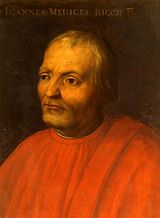 A multinational enterprise (MNE) is defined as any firm with plants extending across national boundaries. A multinational bank (MNB) is a bank with cross-border representative offices, cross-border branches (legally dependent) and subsidiaries (legally independent). Multinational banks are not unique to the post-war period. From the 13th to the 16th centuries, the merchant banks of the Medici and Fugger families had branches located throughout Europe, to finance foreign trade.
A multinational enterprise (MNE) is defined as any firm with plants extending across national boundaries. A multinational bank (MNB) is a bank with cross-border representative offices, cross-border branches (legally dependent) and subsidiaries (legally independent). Multinational banks are not unique to the post-war period. From the 13th to the 16th centuries, the merchant banks of the Medici and Fugger families had branches located throughout Europe, to finance foreign trade.
In the 19th century, NMBs were associated with the colonial powers, including Britain and, later on, Belgium, Germany and Japan. The well known colonial MNBs include the Hong Kong and Shanghai Banking Corporation (HSBC), Founded in 1865 by business interests in Hong Kong Specializing in the China Trade.
Those special interests were by the profiteers in the China Opium, tea and silk trade. By the 1870's branches of the bank had been established throughout the Pacific basin. In 1992 the colonial tables were turned when HSBC acquired one of Britian's major clearing banks, the Midland Bank, and HSBC moved its headquarters from Hong Kong to London before Hongkong returned to China in 1997.
Today the Fugger families had branches located throughout Europe. MNBs include the Hong Kong and Shanghai Banking Corporation (HSBC), in Hong Kong specializing in the ´China trade of tea, opium and silk.
 THE BRITISH EAST INDIA COMPANY
THE BRITISH EAST INDIA COMPANY
Two of the most powerful influences in the world today are the international drug trade, which began with the East India Co., and international espionage, which began with the Bank of England.
The East India Co. was granted a charter in 1600 in the closing days of Queen Elizabeth’s reign. In 1622, under James I, it became a joint stock company. In 1661, in an attempt to retain his throne, Charles II granted the East India Co. the power to make war. From 1700 to 1830, the East India Co. gained control of all India, and wrested the historic monopoly of opium from the Great Moguls.
The British East India Company was all about setting up a law about moving the goods and the money internationally.
The Order invariably enlists “the law” against its enemies. The East India Co. originated as the London Staplers, was later known as the London Mercers Co., merchant guilds which held monopolies over certain avenues of commerce. It was a direct offshoot of the commercial banking establishments of northern Italy, Venice and Genoa. Related firms were the German Hansa, and the Hanse of the Low Countries, which was headquartered in Bruges. It was also allied with the Levant Co. and the Anglo-Muscovy Co. Sebastian Cabot, whose descendants are prominent in American banking and intelligence, raised the seed money for Anglo-Muscovy in Italy and London. The company operated northern overland trade routes from the Baltic to India and China. Other related firms were the London Company, chartered in 1606 to establish The Virginian Plantation on a communistic basis, and the Plymouth Company, whose descendants control the New England business world.
The Crown periodically tried to maintain control of the monster it had unleashed. State Papers (Domestic) Interregnum, xvi, No. 97 (1649-51) states,
“Whereas severall warrants have bine obtained by the East India Company, for the transporting of severall great quantities of Gold and Silver the Ilk som tymes is granted to severall merchants and others upon ther petion and suggestions, and weras under cider of thes warrants to divers other great soms of money, both English Gold and Silver is transported out of the nation, wch might be prevented yf the stat would apoynt a swroen controlled one skilled in this affaire, to tak a vew and serch of all badge and cases of tresur, that are transported out of the nation, and to see to the packing and making up of said tresur, and that ther be sent no more, then, what the stat gives licence for, both for quantytie and quality, and registered, and returned yearly to the council of stat, and that the sd controller for his view and search and sealing and marking it up shall demand and have tow shillings appon every hundred pounds sterling by tayl, or the valew of every hundred pounds sterling, if that the Gold or Silver should be in bares or ingots, for all Gold and Silver that shall be exported by licence, either the East India Company or any other person whomsoever, and that it shall not be lawful for any man to transport Gold or Silver befor it be vewed and examined by Tho. Violet or his sufficient debity, and registered.”
The "City" banks, which dominate American finance and politics (code name for banks for the "City", financial district of London), descend directly from East India and Bank of England operations.
The Rockefeller Empire is the most prominent scion of this dynasty. The University of London was originally financed by Jeremy Bentham of the East India Co.,
RIGHT WING REPUBLICANS
Staplers formed the King’s Party against the ---- landed nobility (republicanism) and parliament ---- Then as now, the left wing sought ownership of all land through an absolute ruler and a totalitarian centralized government.
LEFT WING
The University of London was originally financed by Jeremy Bentham of the East India Co., and John Stuart Mill.
The University of London, which received a $2 million grant in 1924 from Beardsley Rural as head of the Laura Spelman Rockefeller Fund, and many other grants from American foundations houses Gresham College and the London School of Economics, where Harold Laski taught John F. Kennedy and David Rockefeller the principles of the World Order.John Stuart Mill’s father, James, who was with the East India Co., named his son after John Stuart, head of East India Co. John Stuart Mill was secretary of the East India Co. from 1856 until its dissolution. One of Mill’s most famous disciples, David Ricardo, originated the Theory of Rents, later expounded by the Marxists, and the “bare subsistence” law of wages. His descendant, Rita Ricardo, married to Wesley Campbell, head of the Hoover Institution, advised President Reagan on social security.
Robert Owen, promoter of the New Harmony commune, was a principal backer of John Quincy Adams’ Presidential campaign. Adams had withheld support from Madison during the War of 1812, and had threatened secession from the Union. As Secretary of State, Adams had drafted the Monroe Doctrine, which gave the British East India Co. control of all Latin American markets, while keeping out all of its competitors!
The future wealth of America : the resources of the United States and the commercial and agricultural advantages of cultivating tea, coffee, and indigo, the date, mango, jack, leechee, guava, and orange trees, etc. With a review of the China trade.
CHINA TRADE IS THE ILLEGAL OPIUM DRUG SMUGGLING PIRATES
Russell & Company. Russell & Co. Records, 1820-1891
Perkins & Co. was established in 1803 as a branch of the Boston based merchant trading firm J. & T.H. Perkins & Co., owned by merchant brothers James and Thomas Handasyd Perkins. Perkins & Co. was the American in China trading silk, tea, and opium.
John Perkins Cushing, a Perkins nephew, was partner and head of the China branch until 1827 when he retired leaving Thomas Tunno Forbes, his protege, in charge. Samuel Wadsworth Russell, a native of Middletown, Connecticut also had established himself in China trading silk, tea, and opium.
Samuel Wadsworth Russell and Philip Ammidon were partners in the firm Samuel Russell & Co., and while prosperous they did not share the close business association that Cushing had with the powerful Hong merchant Houqua. The untimely death of Forbes in 1829, uncovered a reference in his papers that if anything should happen to him the affairs of Perkins & Co. and Bryant & Sturgis should be looked after by Russell & Co. Cushing was in England at the time of Forbes' death and quickly returned to China to reorganize the business. In 1830 Bryant & Sturgis and Perkins & Co. were merged with Russell & Co. with Augustine Heard as partner and John Murray Forbes as a clerk in the Canton office.Another American firm, with ties to Boston, operating in China at the time, Russell, Sturgis, & Company, a branch of Russell & Sturgis of Manila, was headed by Warren Delano and Russell Sturgis, later head of the London banking firm Baring, Brothers. The Chinese business affairs of Russell & Sturgis (Russell, Sturgis & Co.) were looked after by John Perkins Cushing.
After Cushing departed China, Robert Bennet Forbes, then partner in Russell & Company, coordinated a merger between the Canton branch of Russell & Sturgis and Russell & Co. with Delano becoming a partner in the later in 1840. Russell & Co. continued to trade in silk, tea, porcelain, and to lesser degree opium for the 19th century until it's dissolution in 1891. Many well known China traders worked for or were partners in Russell & Co. including multiple generational members of the Sturgis and Forbes families.
The Boston Brahmins
The fabulously rich Cabot family were in the so called "tea import " trade and the slave trade. Slave trader Thomas Handasyd Perkins of Newburyport was one of the Boston brahmins--as was Coolidge , Delano ( Roosevelt family ) and Alsop. Perkins family had wide net of blood relatives like Opium runners Appletons, Endicots, Hoopers, Higginsons, Jacksons, Lowells, Lawrences, Phillipses, Saltsonstalls etc. Sutherlands ( cousin of Hongkong drug business chief Matheson ) , Barings ( P&O opium shipping founders ) and Lehmans ( drug money laundering ) were cousins of drug running Rothschild. Russels bought from Perkins and the chief of the drug tradepost in Canton was Warren Delano Jr the great grandfather of President Roosvelt. Russel and drug runner Taft founded the white skull and cross bones society. The Russel Trust Co fleet flew the Templar Knights flag. Charles Cabot of Boston was openly smuggling Opium to China under the protection of the British. Schiff, Harriman, Guggenheim, Stimson, Wayhauser, Vanderbilt, Good year, Philbury, Bush were all Skull and Bone fraternity members in the Opium business.
T.D. Allman, in “The Doctrine That Never Was”, Harper’s, Jan. 1984
Revealed that Monroe actually pledged not to interfere with any European power, unless they set up “new” colonies. The agreement, which was not even called the “Monroe Doctrine” until many years later, guaranteed the East India Company its markets in this hemisphere. When Britain violated the agreement in 1833 by seizing the Malvinas, the U.S. did nothing.
The New England banking and shipping interests controlled by Adams’ group created the Second Bank of the United States by repeated stock speculation campaigns, marked by typical bouts of hyperinflation and sudden deflation, which gave them control of millions of acres of farm lands throughout the Mississippi Valley from the Great Lakes to the Gulf of Mexico.
This gave them enormous political influence in this entire region, allowing them to seed the southern Mississippi Valley with fanatical Secessionists and Abolitionists, whose revolutionary acts made the Civil War inevitable.
Owen also coined the term Socialism; he was a business partner of a cotton manufacturer named Engels, whose son later became his political disciple, and still later became the partner of Karl Marx in founding the world Communist movement.
2009 German Institution Won't Return Gold to Jewish Heirs - Berlin Museum Battle Jewish Heirs Over Disputed Art
The items, among them a small inlaid altar and a reliquary in copper and ivory, were the property of the church of Saint Blaise in Brunswick until 1671, when the local branch of the royal house of Guelph acquired the original 82 items.
A German foundation that has returned Nazi-looted art in the past is refusing to budge in the latest restitution claim upon its holdings. Four Jewish art dealers Zacharias Max Hackenbroch, Isaak Rosenbaum, Saemy Rosenberg and Julius Falk Goldschmidt had jointly acquired the family collection from Duke Ernst-August of Braunschweig-Lueneburg, whose fortunes suffered in the Great Depression. The heirs have brought a claim against the Prussian Culture Foundation for its portion of the Treasure of the Guelphs, 42 medieval golden containers displayed at the Berlin Applied Arts Museum, Deutsche Presse-Agentur reports. The heirs and their lawyer, Markus Stoetzel, argue that the 4.2 million reichmarks the dealers took for the pieces from the state of Prussia were far less than the objects' true value in 1935, and that they did so because of the financial distress they were facing under Nazi persecution. The foundation, on the other hand, argues that the sale was legal and fair and that the dealers overpaid for the gold treasures in 1930, when they bought them for 8 million reichsmarks. Prussian Culture Foundation Chairman Hermann Parzinger will meet with Stoetzel to discuss the claim further.In the 1930s, collectors and the Nazi German state bought the collection, known as the Treasure of the Guelphs, from the four owners. The treasures date from the 11th to the 15th century and illustrate the sophistication of medieval German goldsmiths.